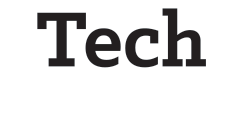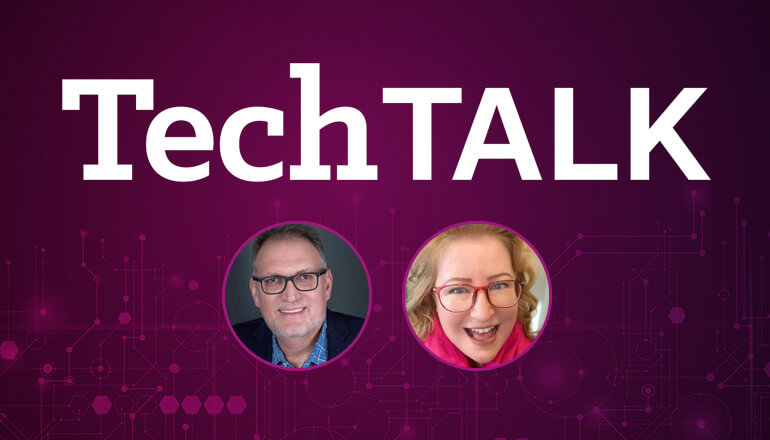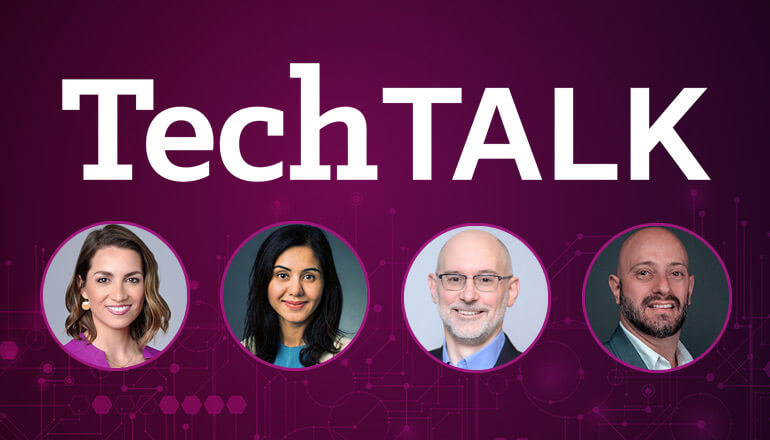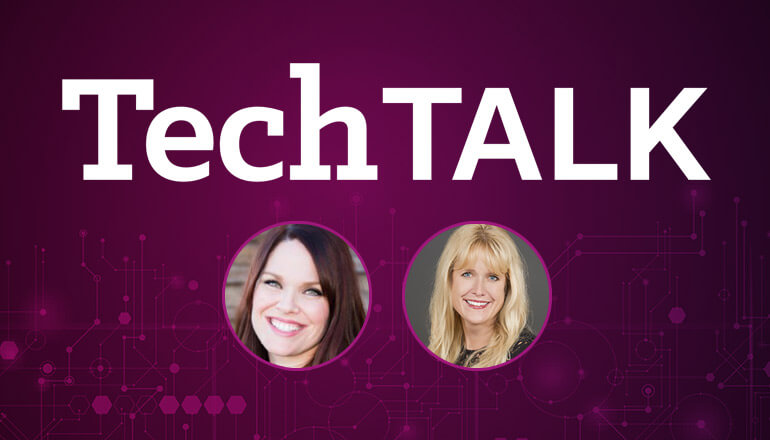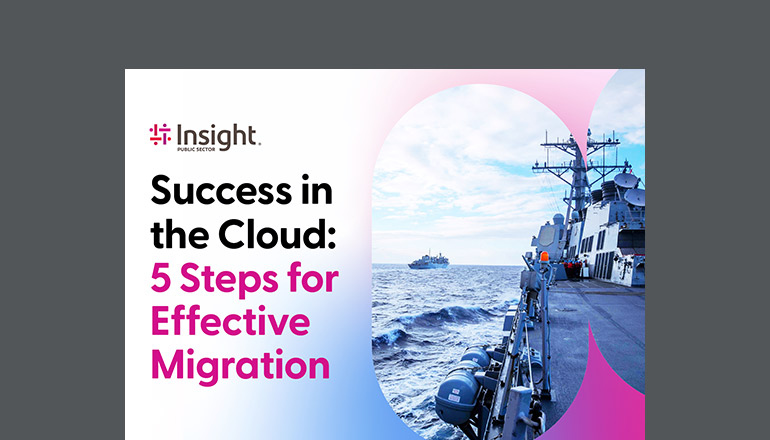Audio transcript:
Adapting the Device Lifecycle for the Hybrid Workforce
[Music]
Erica
Hello, thanks for joining another Insight Tech Talk. We are here to talk about today the device lifecycle and what happens when there's a break in the chain in the lifecycle and how the current state of our world has changed how we respond to the device lifecycle and responding to our users out in the field. Today I am joined by Jefferson Raley, hi Jefferson.
Jefferson
Hi.
Erica
Jefferson is the Vice President of Commercial Client Services Portfolio at Dell Technologies and I'm Erica Miles the Senior Manager of Product Lifecycle Domain in the Connected Workforce at Insight. So, Jefferson let's jump right in.
Jefferson
Excellent.
Erica
We've been remote for a year now, a full year and what we're starting to see from our clients is they're ready to move back into the workplace.
Jefferson
I know I am.
Erica
Yeah, me too, me too. I'm definitely, definitely an office girl, but our clients are ready to move back into the workplace and they're trying to figure out am I going to be 100% remote? Am I going to go to a hybrid workforce? Am I going to leave my clients working in the office 100% of the time? So, as they work through that, I want to cover two data points with you, and I want to hear your reaction to them. So, both of these are from McKenzie. First, 93% of organizations experienced an increase in remote working and, or collaboration during the crisis. 54% of them think they're going to stick to this after the pandemic is over. Secondly, 25% of the workforce could work from home three to five days a week and remain just as productive as if they're in the office. What is Dell seeing in terms of response from clients to this pandemic? Everything I just said in terms of the data and how we respond to the device lifecycle based on that.
Jefferson
Yeah, Erica, we're seeing the same things both when we talk with customers, but also when we talk with our own employees. It's not really about going back to the way things were, what happened here was an acceleration of trends that were already happening in our industries where more and more people were realizing they can not only be as productive, but many times more productive working in whatever location suits that work best. Now, look, a lot of times like you and I were talking, that's going to mean going into the office where you can collaborate with teams and work together in whiteboard. I'm sure looking forward to that. But it also sometimes means working from home like you and I are right now where we can get some quiet time, we could really focus on getting work done. And the other thing I'll say about this is I think this has really helped global collaboration, right? And so, for those of us who have coworkers who may be across the city, or in a different city, or state, or country, now we're just all working together in the same room in Zoom or whatever technology you're using and it's really, I think, improving that collaboration. So, I think the stats you're talking about are right on. I don't think people are going to go back to the old way. I think we're going to go onto a new and better way.
Erica
Right and we're seeing that same trend here at Insight, right? We have clients that are coming to us that are very focused on from readiness to the end life, I need to be prepared for the change. So now they've prepared for the change almost a year ago and I feel like they're in a better position to now prepare to go back into the office and what that means in terms of modern management that they've already deployed modern deployment of their devices so that they can get devices out quickly and safely to their users focusing on security. And then lastly, ensuring that their users are up and running. So, they're quickly getting devices out so that their users are productive.
Jefferson
Well, I tell yah, you really hit on it there. It's really about user productivity, right? And that means if a customer buy some kit, how quickly can a user be productive on that equipment? How quickly can we get it into their hands? Not just in their hands, but with every application and security update and other things that they might need. But it's also about how we keep that system running and productive and healthy and more and more secure throughout the lifecycle of that device. And I think a lot of us historically, we were able to rely on that local IT lab or technician. So, we'd have some level of automation, but then you could always fall back on, well, if you have some problem that I can't fix automatically, you can just go into the lab. That's just not true. It hasn't been true for any of us for a year plus, but it's not going to be true in the future. And so all the automation that you talked about, Erica, things like moving to modern device management, managing your devices out of the cloud, but not just the device management, also security management, identity management, moving it all to the cloud so that wherever people work, they can be productive, but exactly the way you said so that we can provide that level of service so that when they get a new device, they're up and running instantly, but then we keep them running, that devices healthy and available and secure throughout its lifecycle.
Erica
That's right. So, can you talk a bit about how Dell responded to the abrupt change of moving into a remote workforce and how you focused on ensuring that the device lifecycle was focused on, and you were really intentional about how you rolled that out to your users?
Jefferson
Yeah, absolutely. In a lot of ways, it's a great story that I think will resonate with a lot of our audience. As a 100,000 seat plus global organization, we went through the exact same things everyone else did. I personally, have worked in our Round Rock Texas campus for a couple of decades and almost overnight that shut down along with every other facility, right? And look, for some users that wasn't too hard. There were people like me who were already in the flexible workplace program, and we had notebooks, we had VPN access, we had all of that, right? And so really for users like us, it was an acceleration of trends that were happening anyway.
Erica
Right, correct.
Jefferson
Just talking about services specifically, I'm sure you had the same thing, Erica. We had a lot of people in call centers and engineering labs, people who worked in the office all the time and overnight, we had to get them notebooks with all the stuff, the peripherals, the applications, everything they need to be productive over the past year. Really, we did for ourselves what we do for our customers and that is driving very fast transformation, right? And I'm proud to say, we didn't skip a beat, right? The team did a great job and our customer metrics stayed high, but I think we learned a lot, we've all learned a lot through this about the value of remote management and really driving that high level of automation.
Erica
Right and I experienced the exact same thing that my team and myself we were used to work in remote. We did have here in Texas where I said, of course, we do have a team and you're absolutely right. It's your help desk folks, the folks that are working in the warehouse that have to go to work. How do you respond to that and ensure they're being safe due to the pandemic, but ensuring that they have what they need so that they can be at work and then the users that are not at work are being responded to effectively and fast so that they can remain productive? And I think Insight did a great job at it too. I was glad to see that.
Jefferson
Yeah, absolutely. I mean, look, we've, both of our organizations have been working together for a very long time, partnering together to solve these problems for our joint customers and I think it's been a valuable learning period for us.
Erica
Yeah, so I'm going to touch on that a little bit. So, we have been working together, partnered on, I would say, purpose-built solutions that where we both thrive. So, Dell in terms of the devices, right? Pushing out devices and services to clients and then Insight as well, pushing out those devices and some of those lab services, integration services, replacement services, but really partnering with Dell to make sure we're leaning on your expertise for user personas, right? Security within the devices and how we solution for our clients so we're giving them purpose-built solutions. As we talk through this, and you and I are going to do a couple more webinars and client events focused on the device lifecycle, I want to talk about one of the recent offerings we've done together which is an OEM Device as a Service solution, mostly called DaaS in the industry. And DaaS is actually, in my opinion, it has grown due to the pandemic and where we are. So, our clients are asking for consumption-based services, but I want to pay for it in a bundle so that I can flex up, flex down as I need to, but I have bundles that are focused on certain personas. So, if I have users that are working in the office 100% of the time, they may meet a different type of requirement versus my users that are home 100% of the time. And that's really covering every segment from corporate to enterprise, even to public sector when we look at the schools in K through 12. So, I'm super excited about what Insight and Dell are doing together in partnership for these purpose-built solutions and what we're going to do together in the future.
Jefferson
Oh, absolutely and I think this is another one of those trends that we saw accelerated over the past year, but we we've seen it happen with data center and the hyperscalers. We've seen it happen with the way we watch movies and the way we get from place to place when we're on vacation. There's this real drive to as a service and to me as a service, you're going to get a couple of things, right? One, and you mentioned these Erica, one is that flexibility, right? These services allow people to consume what they need with the flexibility that they need in a changing environment. And the second is the outcome, right? In the old way of doing things, and I say old way, a lot of people still do it this way and it's great, but the customer really has to assemble the hardware and the deployment, the service desk and the technologies and how are you going to secure the device and the software. They have to assemble all those pieces and figure it out for themselves. With an as a service, you don't do that. There's an outcome, it's predictable. If that outcome fits what you need, then now up to us to provide all of the stuff that gives customers that outcome. And I think this was really about freeing up our customer's IT departments. Look, I don't think there's an IT department in the world that has more resources than work.
(both laughing)
Jefferson
We are all trying to get more done every day with fewer resources.
Erica
That's right.
Jefferson
And the more resources that you're spending on service desk, or just keeping the lights on, or keeping computers working, those are resources that you can't spend on modernizing your e-commerce platform, or launching the next new product, or fundamentally transforming your own business. And so, when I talk with customers about why they're interested in this, that's a lot of it is, hey, Dell Insight, we're ready for you just to take care of this, keep those things running, keep my users productive while I go focus on the things that are really going to make their own companies more successful.
Erica
Right, and tell me what you're seeing in the industry, right? We're getting a lot of that. We want to hear from you, Dell and Insight. We want you to tell us what are other companies our size with our user personas, with our requirements, how are they responding to this? Tell us what you're seeing and then pass that on to us, we trust you. We trust you and we want you to help guide us through this journey.
Jefferson
Absolutely and you mentioned personas a couple of times and that's really important. This is not one size fits all, right?
Erica
Right.
Jefferson
Different users need different applications and peripherals and hardware and service levels and I think you're exactly right. Defining those personas within your customers so we build the right solutions, that's just a real key to success.
Erica
That's right. Well, thank you so much Jefferson for having this chat with me and thank you for your continued partnership. Thank you everyone for tuning in today. Please be on the lookout, Jefferson and I, like I said, are hosting a webinar where going to go into this a little bit more in detail and then we're also going to have a client event. Thanks so much.
Jefferson
Thank you.
[Music]
